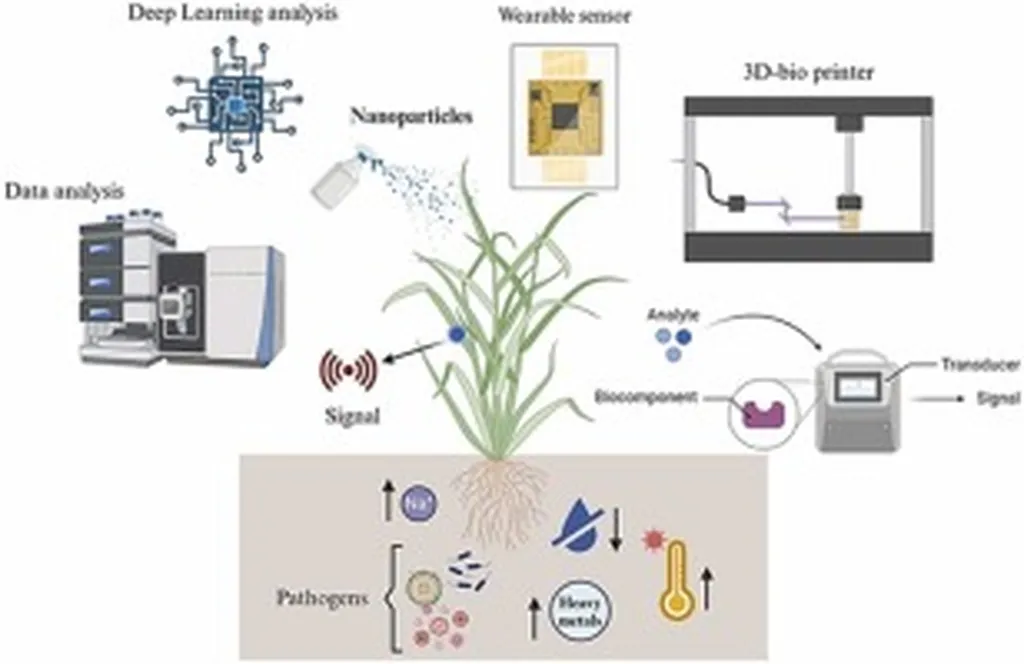In the heart of China’s Jiangnan University, a team of researchers led by Xin Wang has developed a groundbreaking biosensor that could revolutionize how we monitor crop health and ensure food security. This innovation, published in the journal *Ecotoxicology and Environmental Safety*, focuses on detecting hidden stress in soybean plants caused by lanthanum, a rare earth element increasingly found in agricultural soils.
Soybean, a major economic crop, is particularly vulnerable to the accumulation of rare earth elements (REEs), which can lead to hidden stress and subvisible damage long before any visible symptoms appear. This hidden stress can significantly impact plant health and agricultural productivity, posing a threat to sustainable agriculture. The team’s dual-component living-cell biosensor offers a solution by monitoring in real-time the changes in electron transfer impedance (Ret) associated with two La(III)-binding proteins: extracellular vitronectin-like protein (VN) and plasma membrane-anchored arabinogalactan proteins (AGPs).
“Early detection of hidden stress is crucial for proactive agricultural monitoring,” explains Xin Wang, lead author of the study. “Our biosensor enables us to capture these early physiological alterations before visible symptoms occur, providing a valuable tool for farmers and agronomists.”
The biosensor’s sensitivity was demonstrated in experiments where soybean leaves were exposed to varying concentrations of lanthanum. At concentrations of 40–100 μM, significant subvisible cellular damage was detected, evidenced by a substantial increase in malondialdehyde levels and a decrease in chlorophyll content. Concurrently, the biosensor recorded a notable increase in Ret for both VN and AGPs, indicating its ability to sensitively capture early physiological alterations.
As lanthanum concentrations exceeded 100 μM, visible leaf damage became apparent, covering up to 31% of the leaf surface. The biosensor continued to detect increases in Ret, further validating its effectiveness in monitoring plant health.
The commercial implications of this research are substantial. By enabling early detection of hidden stress, farmers can take proactive measures to mitigate damage and maintain crop productivity. This technology could be integrated into precision agriculture systems, allowing for real-time monitoring and targeted interventions.
“Our goal is to provide farmers with the tools they need to ensure sustainable and productive agriculture,” says Wang. “This biosensor is a step towards that goal, offering a proactive approach to crop health management.”
The development of this biosensor opens new avenues for research and application in the field of agritech. Future developments could see the integration of this technology into larger agricultural monitoring systems, providing comprehensive data on crop health and environmental conditions. This could lead to more efficient use of resources, reduced environmental impact, and increased food security.
As the agricultural sector continues to face challenges from environmental stressors and the need for sustainable practices, innovations like this biosensor offer hope for a more resilient and productive future. The research, conducted at the State Key Laboratory of Food Science and Technology and the School of Health at Jiangsu Vocational Institute of Commerce, represents a significant advancement in the field of agritech, with the potential to shape the future of agriculture.
In a world where food security is increasingly under threat, the ability to detect and mitigate hidden stress in crops is more important than ever. This biosensor not only provides a valuable tool for farmers but also highlights the importance of ongoing research and innovation in the field of sustainable agriculture.

